Hey culture vultures! Feast your eyes on the ‘No Ordinary Terrain’ exhibition at MUŻA
What happens when a group of artists take over a public space and transform it into a private expression? A wealth of art ready for you to enjoy, that’s what!
‘No Ordinary Terrain,’ a collective exhibition by artists Sandra Zaffarese, Aaron Bezzina, Keit Bonnici, and Tom Van Malderen does just that. The exhibition invites audiences to take a close look at the appropriation of space both from a local and a globalized perspective, whilst tapping into personal and collective stories.
The colour palette of MUŻA’s corridors, and courtyard, the natural light and atmosphere, and the absence of paneled walls or exhibition lighting present in traditional galleries, were both challenges and features which attracted the collective -all of whom like to think and work in a sculptural way- to the project.
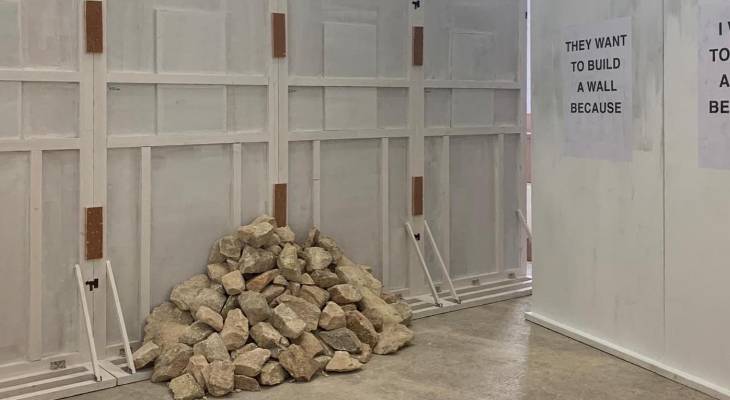
Here’s everything you need to know about this remarkable exhibition
Upon entering the museum, one is confronted with a meticulously reconstructed rubble wall that obstructs the view of the courtyard. Strategically stacking shards of limestone in jigsaw puzzle fashion, the hajt tas-sejjieh was traditionally built by Kyle Darmanin without the use of mortar. “As in a game of chess, Kyle Darmanin was always four stone steps ahead. Watching him assemble the wall was a meditation,” observes Tom, the exhibition organiser.
Divorced from its rural environment, the showpiece rubble wall becomes both a barrier and an instruction. Walls have always served to define our positions and organize the world between us. The exhibit questions the nature of our obligation to society and our immediate community when we construct a boundary.
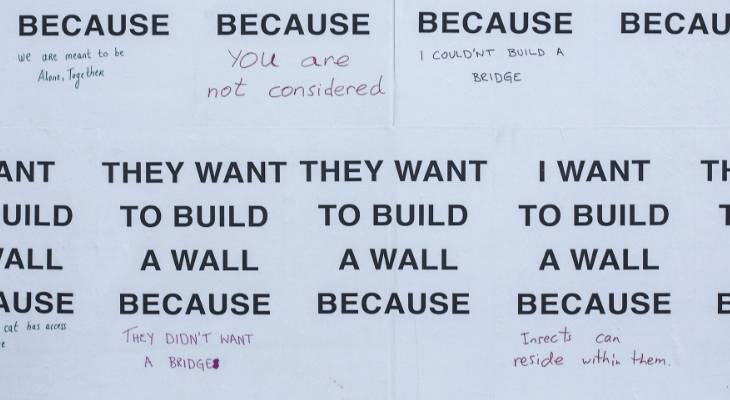
Both Sandra Zafferese’s use of confetti in her installation ‘All is not lost,’ and Keit Bonnici’s domestic robot in ‘Dancer’ occupy the space they inhabit by spontaneous movement. Using a material that is traditionally associated with moments of joy and celebration, the confetti, heaps of tiny machine-cut paper circles, serve to remind us of the eventuality of loss, erosion, and human intervention. The robot, which can be activated remotely from Keit’s cellphone, is a reflection of how artificial intelligence occupies and contests space in our lives. Confronting perplexed visitors unsure how to interact with this exhibit, Keit’s installation provides a springboard for debate. How can we occupy space when not physically present through digital and social media?
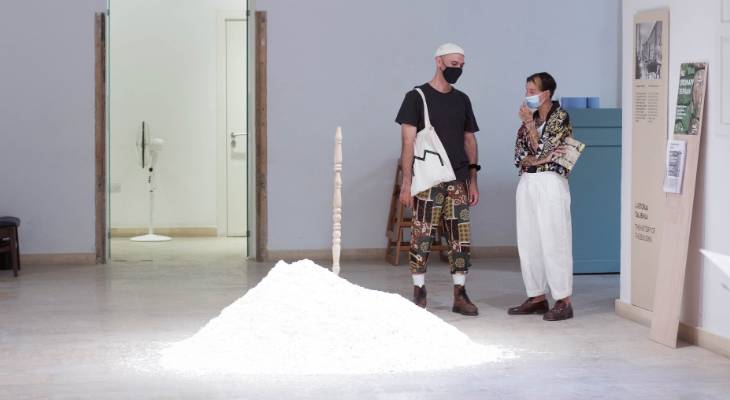
Aaron Bezzina’s ‘Floor Pieces,’ which literally translates into ‘bicciet tal-art’ (floor cloths) in Maltese, play with themes of temptation and permission. Despite his anti-interactive approach to art, visitors feel compelled to touch and manipulate the three tiles representing deactivated traps. The floor tiles, forms of land demarcation revealing the owner’s personal taste and aspirations occupy floor space on a small scale whilst denying access.
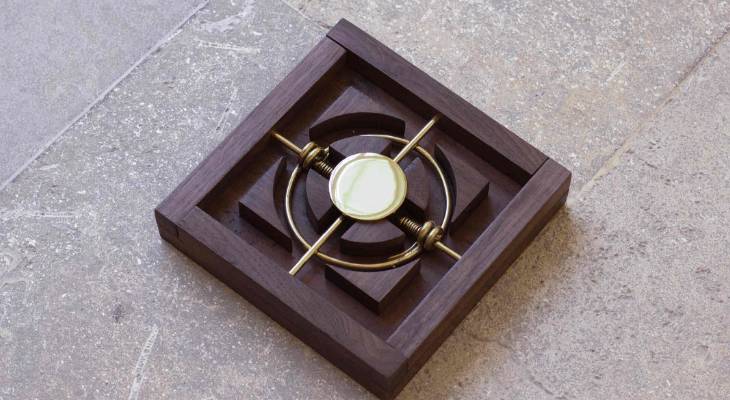
Coloured felt-tip pens are suspended above plinths of A-4 paper and left for several days to leak out and dry up, seeping into the stacks of paper below in Sandra Zaffarese’s installation ‘A world of their own. ’ The resulting yellow blots reference the power of lichen “spreading out and taking up the whole page.” Ubiquitous in Malta and considered healthy colonizers, these patches of algae, fungus and bacteria take root everywhere and spread very slowly.
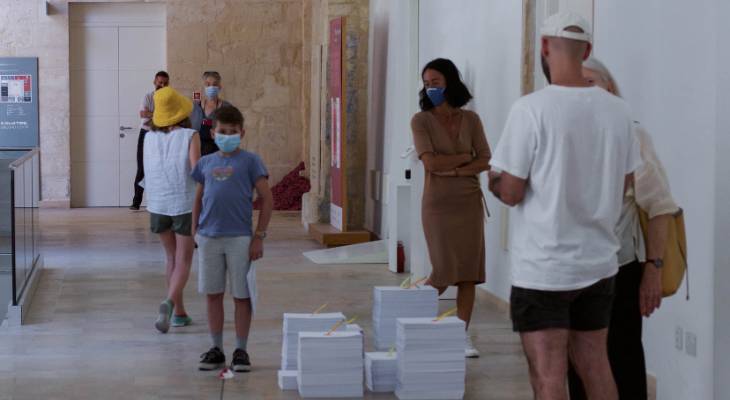
Polemics of land appropriation on a tiny island, where space is at a premium and the interplay between private and public spheres is hotly contested, reveal more about who we are and how we shape our reality and identity.
“When I fly back home to Malta, and the plane comes out of the clouds, it does this turn over the freeport, and suddenly there are the fields below with the hunter huts. I see them, and I know I’m home.” Tom’s installation ‘Too illegal to stay, too peculiar to take away’ juxtaposes the fringe world of illegal boathouses and hunter huts and asks if there is such a thing as a pristine landscape. What social constructs and emblems of identification would be lost if these structures were to be simply erased?
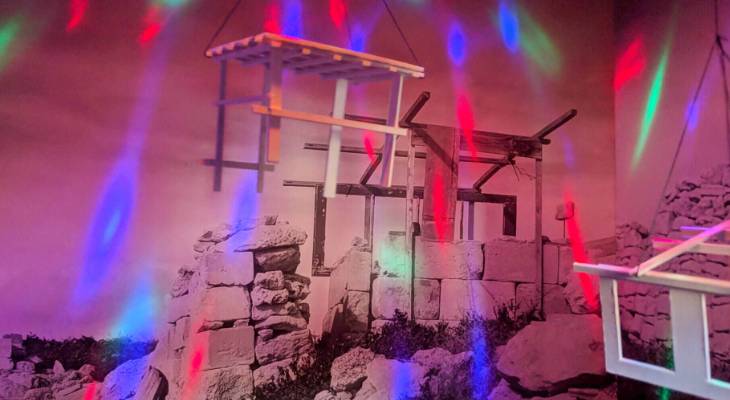
Filmed on a roof overlooking a large construction site, ‘Bigilla’, a video by Charlie Cauchi and Tom Van Malderen layers audio fragments from various media sources with scenes from the heavy building equipment and the eating of a traditional Maltese broad bean dish that steadily escalates into a savage act. Inspired by Sonia Andrade’s video Untitled [Beans] from 1975, the artists question their own role, identity, and position in contemporary Malta, the island they both immigrated to a while ago. The work echoes their struggles with a home that is increasingly colonized by money and dominated by politics of identities, leaving them less and less room to fit in or being heard.

‘No Ordinary Terrain’ attempts to inhabit a “weak position within the grey zone” of public and private self-interests. Visitors to the exhibition are invited to experience how the boundaries between both spheres can be more fluid, poetic, refreshing, and inspiring than our polarized contemporary media bubbles make us believe.
The exhibition’s dates
The exhibition continues at MUŻA - the Malta National Community Art Museum until 1st August 2021. Join the debate and attend any of the two public talks and discussions on 17th July and on 24th July from 11am till 1pm. You can also meet the artists on 18th July between 11am and 1pm.